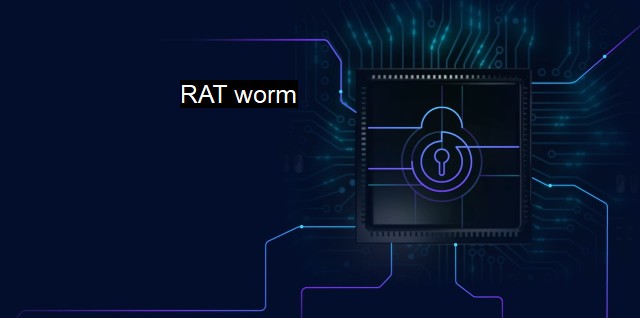What is RAT worm?
The RAT Worm Menace: A Comprehensive Guide to Cybersecurity Threats
Remote Access Trojan (RAT) worm is an advanced type of cyber threat that integrates the destructive features of both a RAT and a computer worm. This malicious hybrid system infiltrates networks and computer systems, causing numerous detrimental effects. Understanding the nature and operations of this cyber threat is imperative in designing and implementing effective cybersecurity and antivirus strategies.The critical defining feature of the RAT worm as a cybersecurity menace lies in its merged characteristics derived from RATs and computer worms. A Remote Access Trojan specifically is a type of malware that gives hackers remote control over the infiltrated system. Once inside, the hacker has the capability to monitor user behavior, modify system settings, perform keystrokes, download/upload files, record through the system’s microphone or web camera, and even turn the computer off or on.
Computer worms, on the other hand, are self-replicating malware that duplicate themselves to extend their damage across the entire network or system. Unlike a virus, which needs a host file to infect and multiply, worms are standalone software that require no human action to proliferate.
RAT worms could therefore deliver double threats. On one hand, they can reproduce themselves pervasively like worms, affecting numerous computers in a network. Simultaneously, they could launch dangerous activities ordinarily associated with RATs, such as remotely controlling and spying on the user of the infected system.
Protecting computer assets from RAT worms is a duty necessitating ongoing monitoring, robust defenses, and rapid response strategies. Antivirus software is an indispensable tool in achieving this objective. This kind of software aims to prevent, detect, and remove l threats like RAT worms, ensuring that computer systems function without any degradation caused by malware.
Effective antivirus software scans files and programs for any indications of RAT worms and other malicious software. It also examines a computer’s memory during operations, searching each executed code and programs. Emails and downloads are regularly checked and screened as potential avenues for malicious software infiltration.
Proactively, antivirus software incorporates algorithms that compare patterns within files or memory to databases of known malware signatures. If certain matches demonstrate a high enough correlation, the antivirus will designate them as potentially malicious and take the necessary steps to mitigate damage.
Antivirus software embraces heuristic analysis that scrutinizes a program’s code, structure, and other characteristics to detect new malware for which signatures don't exist yet. This approach particularly helps anticipate and combat new iterations of RAT worms that may bypass current databases of known malware.
Similarly important to antivirus software are specific cybersecurity habits and measures. Regular updates of system and application software can repair vulnerabilities that RAT worms might exploit. The use of strong and unique passwords, secure network configurations, and firewall settings are crucial. Meanwhile, well-guided suspending behaviors – like avoiding clicking on suspicious links and refraining from downloading unknown email attachments – contribute substantially to preventing RAT worm infections.
Conclusively, RAT worms present a complex threat, with the potential to infiltrate and propagate within systems while enabling hackers to control infected computers remotely. Antivirus software alongside efficient cybersecurity measures forms a comprehensive approach to safeguard against this malware. As advances in technologies proceed, so does the sophistication of cyber threats. The battle against malware like RAT worms necessitates unwavering vigilance, robust countermeasures, and persistent evolution of cybersecurity paradigms.

RAT worm FAQs
What is a rat worm?
A rat worm is a type of malware that allows hackers to gain remote access to infected devices. It is also known as a remote access Trojan or RAT.How does a rat worm infect a device?
A rat worm usually infects a device through a phishing email or a malicious download. It can also spread through unsecured networks or devices connected to the same network.What are the potential risks of a rat worm infection?
A rat worm infection can allow a hacker to access and steal sensitive information, install additional malware, or use the infected device to conduct further cyberattacks. It can also lead to system crashes and data loss.How can I protect my device from rat worms?
To protect your device from rat worms, you should use antivirus software and keep it updated regularly. Be cautious of suspicious emails and downloads, and avoid connecting to unsecured networks. It's also important to keep your operating system and other software up to date with the latest security patches.| | A | | | B | | | C | | | D | | | E | | | F | | | G | | | H | | | I | | | J | | | K | | | L | | | M | |
| | N | | | O | | | P | | | Q | | | R | | | S | | | T | | | U | | | V | | | W | | | X | | | Y | | | Z | |
| | 1 | | | 2 | | | 3 | | | 4 | | | 7 | | | 8 | | |||||||